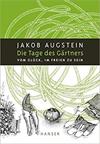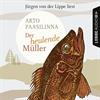Hopscotch
Registered by Rohrspatz of Duisburg, Nordrhein-Westfalen Germany on 6/21/2020
 This book is in a Controlled Release!
This book is in a Controlled Release!
 This book is in a Controlled Release!
This book is in a Controlled Release!
1 journaler for this copy...
"Horacio Oliveira is an Argentinian writer who lives in Paris with his mistress, La Maga, surrounded by a loose-knit circle of bohemian friends who call themselves "the Club." A child's death and La Maga's disappearance put an end to his life of empty pleasures and intellectual acrobatics, and prompt Oliveira to return to Buenos Aires, where he works by turns as a salesman, a keeper of a circus cat which can truly count, and an attendant in an insane asylum. Hopscotch is the dazzling, freewheeling account of Oliveira's astonishing adventures."
Aus meiner damaligen Seminararbeit, 2012:
The active engagement of the reader in Julio Cortázar's Hopscotch
In his highly praised novel Hopscotch, Cortázar's first address to his reader is a lengthy table of instructions to propose different ways of reading. These consist mainly of two possibilities: a linear reading of the first 56 chapters, or a saltatory one which includes the so-called expendable chapters 57-155. Cortázar, it seems, is interested in involving the reader more directly in the act of reading and it is through Morelli's voice that he reveals: “the true character and the only one that interests me is the reader, to the degree in which something of what I write ought to contribute to his mutation, displacement, alienation, transportation” (437). In order to reach such an effect, Cortázar acknowledges that there are different kinds of readers who prefer different styles of reading; in offering them a choice he encourages the reader to make the novel his own, as no two readers will ever read the same book because their perception will depend on their individual background and experiences.
While reading a text the reader constantly aims at making the information conveyed coherent, which leads to a constant revising of reading hypotheses. According to Wolfgang Iser, this hermeneutic process becomes the more intense, the less determined the literary text is. The more gaps a text contains, the more actively is the reader involved to make out its possible intention (cf. Gröne 11). As Juan-Navarro points out, the undetermined spaces in Hopscotch do not block the reader's activity but, on the contrary, stimulate his involvement in the sense-making process (cf. 235). The fragmented style of the novel therefore contributes to the high degree of reader activity it evokes.
The expendable chapters fill some of the gaps in the anterior chapters but at the same time they open up new ones. An example of this can be seen in the episode, where La Maga reveals that she was raped at age 13. The reader is confronted with this information in chapter 15. Following the linear reading, the next chapter gives the information that the offender's name was Ireneo, but we do not learn much more about him or his motives. If the reader chose to follow the saltatory reading, however, he reads the expendable chapter 120 in between the other two. Cortázar makes the reader witness the sadistic joy a child called Ireneo experiences, while putting a grub in front of ants so that they will kill it and observing the excruciating pain Ireneo is sure the grub must feel. Without knowing the relevance of Ireneo at this point, the reader is at first irritated and a lot of new gaps open up to him. Only when becoming aware of Ireneo's identity as La Maga's rapist a chapter later, can a former gap be partly filled. The saltatory reading in this way gives an information advance to the linear one, but at the same time it makes the reading even more active by opening up new gaps the reader is trying to fill. It is therefore true, when right in the beginning of his table of instructions Cortázar himself states that Hopscotch “consists of many books”; it is up to the reader to explore as many of them as he wishes to.
Works Cited
Cortázar, Julio. Hopscotch. Trans. Gregory Rabassa. 1966. New York: Pantheon Books, 1987.
Gröne, Maximilian, Rotraud von Kulessa and Frank Reiser. Spanische Literaturwissenschaft. Tübingen: Narr, 2009.
Juan-Navarro, Santiago. “Un tal Morelli: Teoría y práctica de la lectura en Rayuela de Julio Cortázar”. Revista Canadiense de Estudios Hispánicos. 16.2 (1992): 235-52.
Aus meiner damaligen Seminararbeit, 2012:
The active engagement of the reader in Julio Cortázar's Hopscotch
In his highly praised novel Hopscotch, Cortázar's first address to his reader is a lengthy table of instructions to propose different ways of reading. These consist mainly of two possibilities: a linear reading of the first 56 chapters, or a saltatory one which includes the so-called expendable chapters 57-155. Cortázar, it seems, is interested in involving the reader more directly in the act of reading and it is through Morelli's voice that he reveals: “the true character and the only one that interests me is the reader, to the degree in which something of what I write ought to contribute to his mutation, displacement, alienation, transportation” (437). In order to reach such an effect, Cortázar acknowledges that there are different kinds of readers who prefer different styles of reading; in offering them a choice he encourages the reader to make the novel his own, as no two readers will ever read the same book because their perception will depend on their individual background and experiences.
While reading a text the reader constantly aims at making the information conveyed coherent, which leads to a constant revising of reading hypotheses. According to Wolfgang Iser, this hermeneutic process becomes the more intense, the less determined the literary text is. The more gaps a text contains, the more actively is the reader involved to make out its possible intention (cf. Gröne 11). As Juan-Navarro points out, the undetermined spaces in Hopscotch do not block the reader's activity but, on the contrary, stimulate his involvement in the sense-making process (cf. 235). The fragmented style of the novel therefore contributes to the high degree of reader activity it evokes.
The expendable chapters fill some of the gaps in the anterior chapters but at the same time they open up new ones. An example of this can be seen in the episode, where La Maga reveals that she was raped at age 13. The reader is confronted with this information in chapter 15. Following the linear reading, the next chapter gives the information that the offender's name was Ireneo, but we do not learn much more about him or his motives. If the reader chose to follow the saltatory reading, however, he reads the expendable chapter 120 in between the other two. Cortázar makes the reader witness the sadistic joy a child called Ireneo experiences, while putting a grub in front of ants so that they will kill it and observing the excruciating pain Ireneo is sure the grub must feel. Without knowing the relevance of Ireneo at this point, the reader is at first irritated and a lot of new gaps open up to him. Only when becoming aware of Ireneo's identity as La Maga's rapist a chapter later, can a former gap be partly filled. The saltatory reading in this way gives an information advance to the linear one, but at the same time it makes the reading even more active by opening up new gaps the reader is trying to fill. It is therefore true, when right in the beginning of his table of instructions Cortázar himself states that Hopscotch “consists of many books”; it is up to the reader to explore as many of them as he wishes to.
Works Cited
Cortázar, Julio. Hopscotch. Trans. Gregory Rabassa. 1966. New York: Pantheon Books, 1987.
Gröne, Maximilian, Rotraud von Kulessa and Frank Reiser. Spanische Literaturwissenschaft. Tübingen: Narr, 2009.
Juan-Navarro, Santiago. “Un tal Morelli: Teoría y práctica de la lectura en Rayuela de Julio Cortázar”. Revista Canadiense de Estudios Hispánicos. 16.2 (1992): 235-52.
Released 3 yrs ago (12/10/2020 UTC) at Duisburg, Nordrhein-Westfalen Germany
CONTROLLED RELEASE NOTES:
Given to a friend. Enjoy!








